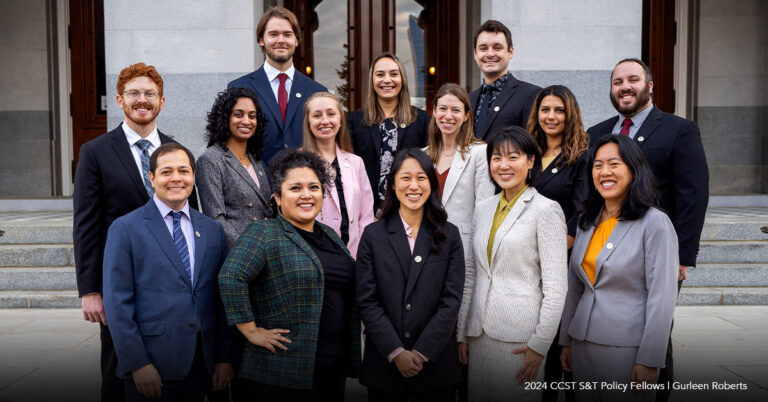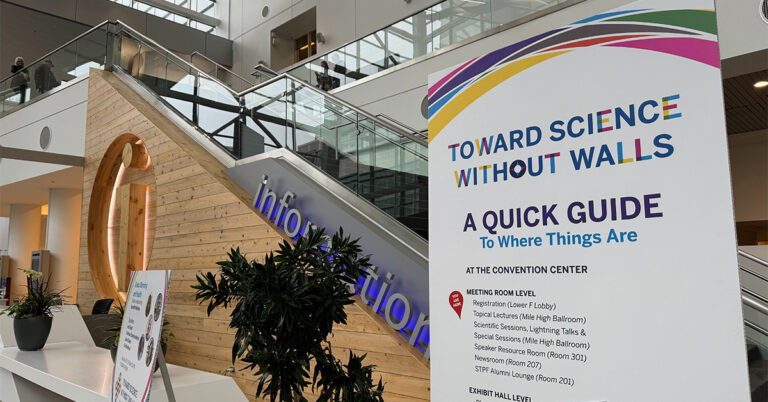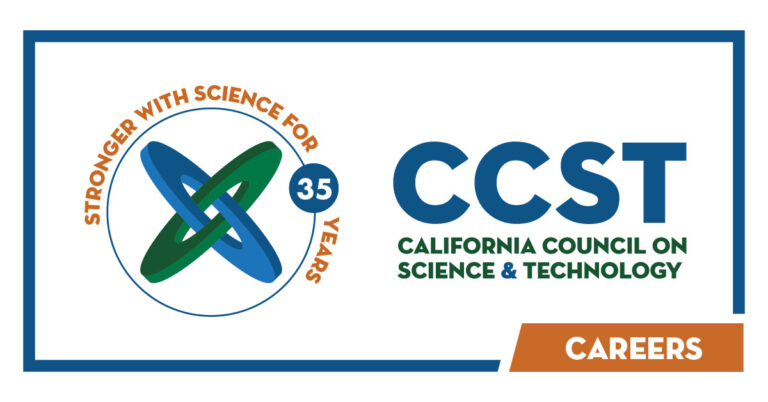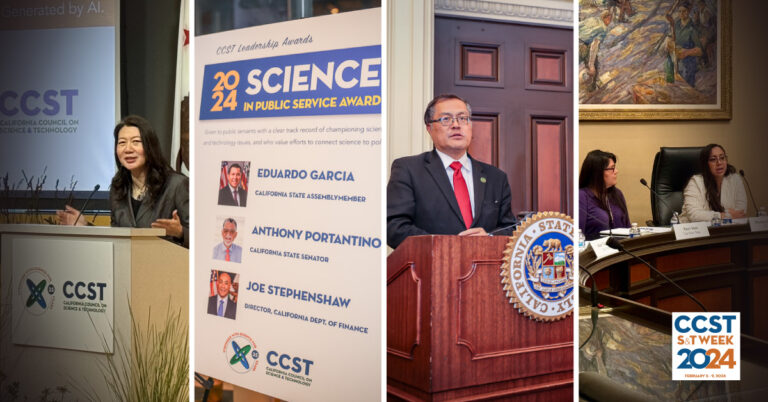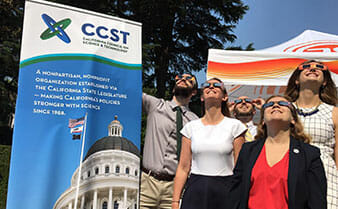Update: Applications for the CCST Science & Technology Policy Fellowship Have Closed
Integrating Digital Media into Teacher Preparation: Cal TAC Summit Report
October 26, 2012 | CCST Newsroom | Contact: M. Daniel DeCillis

A new summary report has been released detailing the proceedings of a June 2012 summit on integrating digital media into teacher preparation in California. (Click here for the report.)
The summit, convened by the California Teacher Advisory Council (Cal TAC), brought together science and math teachers, university faculty, philanthropists, and technical experts to develop a strategy for steering digital media and education in the right direction and explore various pilot programs already underway in the state.
“Today’s students can be considered digital natives,” said Cal TAC Chair Brian Shay, a Secondary Mathematics Teacher at Canyon Crest Academy, San Diego. “All of us are digital immigrants who don’t speak technology as well as our students.”
The summit was organized into two parts. In the first set of sessions, technology standards in current teacher preparation standards were reviewed as well as practice in the classroom.
“[Digital media ] tools are terrific, but only if teachers know how to work with them,” said presenter Kami Thordarson in one of the early sessions, who described her experiences as a sixth grade teacher in the Los Altos School District. The district’s approach of blending online educational content with other quality tools, good instructional practices, and constant opportunities for classroom interactions can have a significant effect on classrooms, noted Thordarson.
] tools are terrific, but only if teachers know how to work with them,” said presenter Kami Thordarson in one of the early sessions, who described her experiences as a sixth grade teacher in the Los Altos School District. The district’s approach of blending online educational content with other quality tools, good instructional practices, and constant opportunities for classroom interactions can have a significant effect on classrooms, noted Thordarson.
The second part of the summit focused on what changes are necessary for moving the vision forward, identifying barriers to integrating technology and what champions for change might be necessary for effective integration of the technology via a systems approach.
Among the most significant barriers identified by summit participants were lack of time for training, knowledge of the technology among program faculty, and a disconnect between 21st century teaching models and the more traditional 20th century school environment found in many California schools.
The summary report, which includes an overview of all the panel discussions, is the latest in an ongoing series of digital education papers produced by Cal TAC and CCST.
“The digital age is coming of age,” said CCST Executive Director Susan Hackwood. “The group assembled for this summit has the ability to apply thoughtfulness and reason to a complex and urgent topic.”

